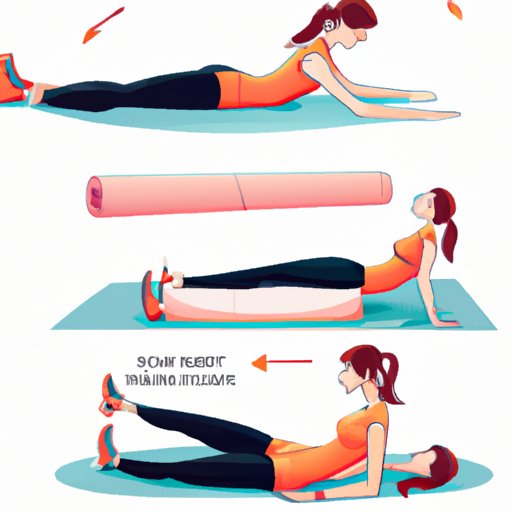
Introduction
Do you suffer from discomfort or tightness in your upper back? This is a common issue for many people, especially those who sit for prolonged periods or engage in repetitive movements. The good news is that there are effective methods to release your upper back tension and improve your posture. In this article, we will explore five methods to pop your upper back and improve your overall well-being.
Method 1: Foam Rolling
Foam rolling is a popular method of self-massage that can help release muscle tension and improve flexibility. Here’s how to use a foam roller to pop your upper back:
1. Lie down on your back with a foam roller positioned under your shoulder blades.
2. Cross your arms over your chest and engage your core.
3. Use your feet to roll the foam roller up and down your upper back.
4. When you find a tight spot, pause and hold the pressure for 10-15 seconds.
5. Continue rolling up and down your entire upper back for several minutes.
Foam rolling can be uncomfortable at first, but it should never be painful. If you experience pain, reduce the pressure or seek professional help.
Method 2: Wall Angels
Wall angels are a simple exercise that can help improve your posture and release tightness in your shoulders and upper back. Here’s how to perform wall angels:
1. Stand with your back against a wall, your feet shoulder-width apart, and your arms bent at a 90-degree angle.
2. Slowly raise your arms up the wall, keeping your elbows and wrists in contact with the surface.
3. Stop when you feel a stretch or when you can no longer maintain contact with the wall.
4. Hold the position for 5-10 seconds, then slowly lower your arms back down.
Repeat this exercise for 10-15 repetitions, taking breaks as needed. For an added challenge, try performing wall angels with a resistance band.
Method 3: Cat-Cow Stretch
The cat-cow stretch is a yoga pose that can help improve spinal mobility and relieve tension in your upper back. Here’s how to do it:
1. Start in a tabletop position on your hands and knees, with your wrists directly under your shoulders and your knees directly under your hips.
2. Inhale and arch your back, allowing your belly to drop toward the floor and lifting your head and tailbone up.
3. Exhale and round your spine, tucking your chin to your chest and drawing your belly button toward your spine.
4. Continue moving back and forth between these two positions, inhaling as you arch and exhaling as you round.
Repeat this stretch for several cycles, focusing on your breath and the movement of your spine.
Method 4: Thoracic Mobility Exercises
Thoracic mobility exercises can help increase flexibility and reduce stiffness in your upper back. Here are three effective exercises to try:
1. Shoulder Dislocations: Stand with your feet shoulder-width apart and hold a resistance band or towel in front of you with your hands shoulder-width apart. Keeping your arms straight, lift the band up and over your head, then down behind your back. Continue moving back and forth for several repetitions.
2. Doorway Stretch: Stand in a doorway with your elbows bent at a 90-degree angle and your forearms against the doorframe. Lean forward slightly, feeling a stretch in your chest and shoulders. Hold for 15-30 seconds and repeat several times.
3. Wall Slides: Stand with your back against a wall, your arms at your sides, and your palms facing forward. Slowly slide your arms up and down the wall, keeping your elbows and wrists in contact with the surface. Repeat for several repetitions.
Perform these exercises regularly for optimal results.
Method 5: Chiropractic Adjustments
Chiropractic adjustments involve manual manipulation of the spine to improve joint mobility and reduce pain. If you have chronic upper back tightness or discomfort, seeking professional help from a chiropractor may benefit you. Here’s what to expect during a chiropractic session:
1. A chiropractor will assess your spine and upper back and may perform diagnostic tests.
2. You will lie down on a special table, and the chiropractor will use hands-on techniques to adjust your spine.
3. You may hear popping or cracking sounds during the adjustment, which is normal and indicates a release of gas from your joints.
4. After the adjustment, you may feel immediate relief or some soreness.
Chiropractic adjustments are generally safe, but they may not be suitable for everyone. Talk to your doctor before seeking chiropractic care.
Conclusion
Upper back tightness and discomfort can negatively affect your daily life, but you don’t have to suffer in silence. By incorporating these five methods into your routine, you can improve your posture, relieve muscle tension, and enjoy better overall health. Remember to take breaks, breathe deeply, and listen to your body. If your symptoms persist or worsen, seek professional help from a chiropractor or healthcare provider.





